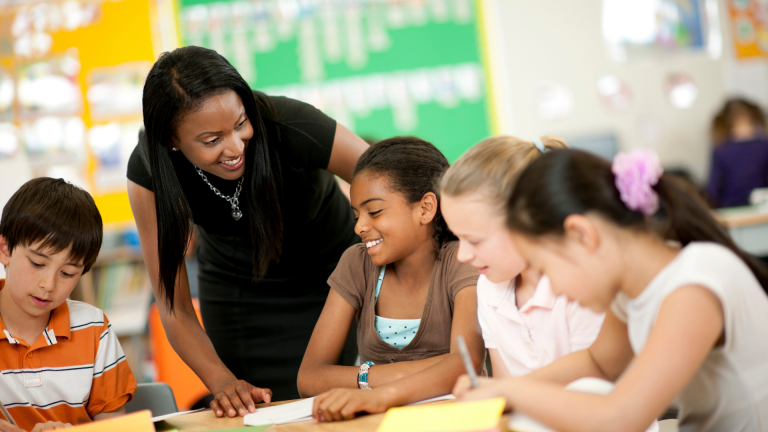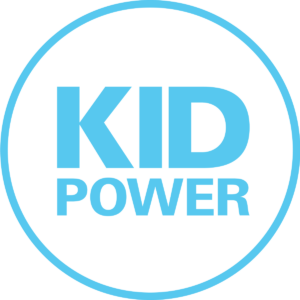From politics and racism to conflict and violence, your students may be hearing about or exposed to some really stressful and disturbing topics. Your classroom can be a safe space for discussion and support, but teaching sensitive topics requires some thoughtful preparation on your part and respectful participation from your students. Below are some tips to help make your discussions comfortable and productive for everyone involved:
1. Inform Parents and Administrators
You will probably want to alert your students’ parents and caregivers, as well as your school administrators, that you will be discussing a specific topic on a certain date. Be sure to share a bit about your approach—that the discussion will be constructive and positive, you’ll require that rules of respect are followed, and you’ll stay focused on solutions and helpers. Also, give students the option to actively participate or listen quietly (and keep in mind that some parents still may wish to opt out their children, and that’s okay).
2. Be Sensitive to Student Backgrounds and Experiences
Do everything you can to become aware of experiences in your students’ lives that may make certain discussions uncomfortable for them, in which case you might want to let them know ahead of time that the class will be discussing that topic and offer an alternative activity (e.g., library time or study hall). If you choose a small-group instead of a whole-group format, carefully group students to ensure that any student who may benefit from extra support (per their background) has at least one strong peer ally in their group. Also, move around the room to monitor small-group discussions closely to make sure everyone is respectful and comfortable.
3. Allow Ample Time
Sensitive topics should not be rushed, so allow yourself enough time to introduce the topic, discuss as a group, answer questions and summarize. If your day becomes too rushed, bump the discussion to another time.
4. Consider Using a Video Prompt
If you’re stuck on how to start, play a short video from a trusted source to introduce a sensitive topic and get students’ thoughts flowing. (Alternatively, you can also use a quick video at the end of your discussion, to extend the learning.) Hint: if you sign up for the (free) UNICEF Kid Power program, you will have access to nearly 300 short Kid Power Up videos, including many on sensitive topics such as social justice, racism, inequality, refugees, conflict in the world, personal values, climate change, gender roles and more.
5. Create Discussion Rules
Before you delve into your discussion or brainstorming session, make sure your students are clear on the ground rules. These rules should exist to ensure that all perspectives and experiences are heard and respected. Your rules might include speaking one at a time, not interrupting, and listening respectfully. Encourage questions but ask students to frame them in “I feel” or “I think” statements. You may want to require students to use openers such as “I agree with NAME and…” or “I respectfully disagree with NAME because…” before students respond to anyone. Students who do not wish to verbally participate can write anonymous questions and comments for you to read aloud or even draw to communicate their thoughts.
6. Focus on Solutions
While you’ll need to clearly frame the sensitive topic you’re discussing, don’t dwell on the problem or share too much detail. Instead, encourage and empower your class to discuss and brainstorm solutions to the challenge. You might also discuss the helpers who are in a position to directly improve the situation, from everyday people doing heroic things to organizations that provide lifesaving support in times of crisis, such as social services, UNICEF, etc.
7. Watch For Signs of Discomfort
You want your class discussion to be constructive—not upsetting—so closely watch your students’ faces and body language. If you see a student getting upset, ask them quietly if they’re comfortable continuing with the discussion. Have some library passes on hand for kids who are okay but need a quiet moment, and be sure to follow up with them (and their parents/caregivers) later.
8. Break up the Discussion with Other Activities
Give your students a break from a heavy discussion with a writing, drawing, or movement activity, such as a Kid Power Up video. To reenergize your students, we recommend the high-energy moves in 1, 2, 3 Move Your Body or Can’t Stop the Feeling. If your students need some calming moves, try Mindfulness with the Croods or the soothing yoga of Relaxation.
9. Provide Closure and Further Opportunities
When your discussion is done, quickly restate the problem, then summarize the ideas your class shared as possible solutions. Thank your students for their thoughtful participation and make sure they know how proud you are of their respectful behavior. Provide a few specific times that you will be available to talk further about the topic (one on one) and fulfill any promises you made to gather more information or answer specific questions your class had during the discussion.
Don’t let the learning stop there. Discussions on sensitive topics can be great launchpads for developing students’ critical thinking skills. After their first discussion on the topic at hand, engage students in related projects that ask them to analyze, evaluate, and/or create.
If students show deep interest in a certain topic, provide them with extension activities or more information from trusted sources (see your librarian for help). You can also suggest constructive, age-appropriate ways for them to put their compassion into action. Hint: sign up to have your students do UNICEF Kid Power in class (and suggest that students participate even further in the program at home with their families). As students complete Kid Power Up videos (physical activities and SEL), they unlock real-world impact for children in need around the world and for local causes students care about.
10. Switch Moods
Once you’ve clearly closed the discussion, help your students transition to something less stressful. Have younger students try a silly Kid Power Up video with good vibes such as Positivity or Celebrate with the TrollsTopia Crew. Older students can get their grooves on with the fun dance moves in Dance Monkey or do a boxing warm-up in Live Another Day.
Teaching sensitive topics isn’t easy. But with a bit of preparation and some clear ground rules, you can provide some comfort and support to your students, while helping them learn to listen actively, present their thoughts constructively, and reflect deeply to think critically.














